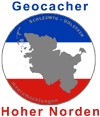An den angegebenen Koordinaten findet Ihr eine Infotafel.
Vor rund 20.000 Jahren formten die abfliessenden Gletscher der Eiszeit die Au. Sie hinterliessen weite Überschwemmungsflaechen, auf denen Moore und Bruchwaelder wuchsen.
An der Foerdekueste bildeten sich Kliffs. Wind und Regen trugen Sand ab und schwemmten ihn vor die Muendung der Au.
Abfliessendes Schmelzwasser unter dem Eis waehrend der letzten Eiszeit und mit grossem Gefaelle abfliessende Wassermassen in die damals 20m tiefer liegende Ostsee nach der letzten Eiszeit haben dieses Tal geformt.
Durch den Anstieg der Ostsee auf den heutigen Pegelstand kam es zu einem Rueckstau des Baches und einer Anhebung des Grundwasserspiegels.
Schwemmsand fuellte im Laufe der Zeit den Talboden wieder auf. Auf den grundwassernahen Flaechen entstanden spaeter Moore und Bruchwaelder.
Das Tal der Langballigau mit einer Groesse von 124ha wurde 1990 zum Naturschutzgebiet erklaert.
In diesen vielfaeltigen Lebensraeumen des Tales leben zahlreiche im Bestand gefaehrdete Tierarten. Neben vielen Libellen-, Heuschrecken- und Schmetterlingsarten findet man auch viele Amphibienarten und auch die seltene Ringelnatter.
Parkkoordinaten: N 54°49.249 E 009°39.238
Logbedingungen:
1. Wieviel Hektar umfasst das Tal der Langballigau ?
2. Nenne 2 typische Pflanzenarten die hier wachsen.
3. Zu guter Letzt, macht bitte ein Foto von Euch oder dem GPS an der Hinweistafel. (bitte nicht spoilern!)
Schickt die Antworten ueber mein Profil mit der Ueberschrift "Tal der Langballigau".
Loggen koennt Ihr gleich.
Sollte etwas falsch sein, melde ich mich.
EN
At the specified coordinates you will find an information board.
Around 20,000 years ago the outflowing glaciers of the Ice Age formed the Au.
They have left wide floodplains, where Moore grew up and broken forests. At the coast of the fjord formed cliffs. Wind and rain erodet sand and swept him out of the mouth of the Au.
Flowing meltwater under the ice during the last ice age and with high gradient effluent water masses flowing into that time 20m deeper Baltic Sea Basin after the last ice age have shaped this valley.
The rising level oft the Baltic Sea causes a backwater of the small river.
Due to this effect the Groundwater level in the Valley was rising too.
Silt refilled in a little while the valley floor again.
On the Areas near the high groundwater growed later Moore and broken forests.
The Valley of Langballigau with a size of 124ha was declared a nature reserve in 1990.
In this diverse habitats of the valley, many live as endangered species. In addition to many dragonflies, grasshoppers and butterflies there are also many amphibian species, and the rare grass snake.
Parking Coordinates: N 54 ° 49 249 E 009 ° 39 238
Log conditions:
1. How big in hectares is the Tal der Langballigau?
2. Name 2 typical types of plants that grow here.
3 At least, please take a picture of you or your gps alone at the place, but please try not to spoil!
Send the answer via my profile with superscription
"Valley of the Langballigau".
You can log directly.
If something is wrong, i will notify you.


